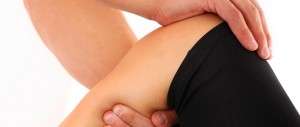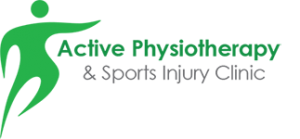Manual Therapy
 Manual Therapy
Manual Therapy
Manual Therapy describes a set of hands-on therapies used to improve the overall functioning of how the body works.
The therapies involved are:
-
”Craniosacral
Craniosacral Therapy or Cranial Osteopathy (or just Cranial for short) is a very specialised Fascial Release Technique. It focuses on treating scar tissue in the deepest layer of fascia, the dura mater, which is the outer covering of the brain and spinal cord, and the cranial sutures. Myofascial Release works on the same basis, using Craniosacral Therapy work.
The Fascia is a very densely woven connective tissue covering and interpenetrating every muscle, bone, nerve, artery and vein as well as all of our internal organs including the heart, lungs, brain and spinal cord. The fascia surrounding the brain and spinal cord is called dura mater and continues down inside the spine to the tailbone or sacrum, protecting and supporting the central nervous system. This central nervous system controls the functioning of every organ, muscle and nerve in the body.
In its normal healthy state, the fascia is relaxed and wavy. It can stretch and move without restriction. When you experience a physical trauma, such as a fall, sports injury or whiplash, the fascia will lose its pliability. It becomes tight, restricted, and a source of tension to the rest of the body.
Surgery, inflammation, and infections can also create fascial restrictions. Repeated poor posture over time and repetitive stress injuries also have a cumulative effect on our body. The fascia can exert excessive pressure on our bodies producing pain or restriction of motion.
Using Craniosacral Therapy, I gently manipulate the cranial bones and/or sacrum three dimensionally using a soft touch generally no greater than 5 grams, or about the weight of a penny. This releases restrictions in the dura mater and surrounding fascia to improve the functioning of the central nervous system.
During the release, you can feel heat, vibration, and pulsation. Once the release is complete, the heat, vibration, pulsation and pain will diminish and there will be a sense of lengthening and relaxation in the tissues. I can then go through several layers of fascial restrictions until the tissues around that structure relax. After a successful treatment, you will experience decreased pain, muscle spasm, fascial tension, joint stiffness, and swelling.
Your postural alignment, mobility, flexibility and range of motion will improve. Even though you may feel less pain initially and move better after a treatment, you may still feel aches in your body for several days afterwards as your body adjusts to the changes. This reaction quickly goes with subsequent treatments and does not occur with each person.
Since craniosacral fascial restrictions can occur due to trauma, I look at each person as a unique individual and each case is different. Depending on the individual, it may take one or several sessions to get the desired response, especially if your symptoms have persisted for months or years. This gentle, manual technique treats the whole person, emphasising the head, spinal region and sacrum.
Craniosacral Myofascial Therapy is increasingly used as a preventive health measure for its ability to bolster resistance to disease, and is said to be helpful for numerous conditions such as
• Migraine
• Chronic Neck and Back Pain
• Whiplash
• Orthopaedic Problems
• Fibromyalgia
• Temporomandibular Joint
• Emotional Difficulties
• Stress and Tension-Related Problems
• Central Nervous System Disorders
• Traumatic Brain and Spinal Cord Injuries
• Post-Surgical Dysfunction
• Infantile Disorders
• Colic -
”Visceral
At optimal health, the relationship between the organs (viscera) and structures of the body (muscles, membranes, fasciae and bones) remains stable despite the body’s endless varieties of motion. But when one organ can’t move in harmony with its surrounding viscera due to abnormal tone, adhesions or displacement, it works against all the body’s organs and structures. This disharmony creates fixed, abnormal points of tension that the body is forced to move around. That chronic irritation, in turn, paves the way for disease and dysfunction.
Visceral Manipulation (VM) is a gentle, manual technique. It focuses on disharmony in the fascial tissues that surround internal organs of the body caused by trauma, surgery, infection, inflammation and/or stress. Once these abnormal points of tension have been identified, I will apply a gentle force and follow the fascial tension three dimensionally with my hands to the restrictive barrier. Once at this restrictive barrier, very gentle oscillatory manipulations are made into the restriction until a release is felt. These gentle manipulations can potentially improve the functioning of individual organs, the systems the organs function within, and the structural integrity of the entire body. Once the release is complete, there will be a sense of lengthening and relaxation in the tissues.
Since visceral fascial restrictions occur due to trauma, surgery, infection, inflammation and/or stress, we look at each person as a unique individual and each case differently. Depending on the individual, it may take one or several sessions to get the desired response especially if your symptoms have persisted for months or years.
Visceral Manipulation is very effective for treating the following conditions:
• Migraine
• Chronic Neck and Back Pain
• Spinal and rib cage pain
• Organ dysfunction
• Whiplash
• Sports Injuries
• Hip, knee and ankle pain
• Shoulder, elbow, wrist and hand pain
• Orthopaedic Problems
• Fibromyalgia
• Temporomandibular Joint
• Emotional Difficulties
• Stress and Tension-Related Problems -
”Joint
Joint Mobilisation consists of a series of gentle stretches to stiff joints in a smooth, rhythmic fashion.
Tight muscles, stiff ligaments, or problems in the joint capsules themselves may cause the decreased range of motion. Mobilisation stretches stiff joints to restore range. If pain is associated with this decreased movement, loosening up the structure that causes the restriction can often relieve the pain.
Mobilisation is safe because it is done slowly and the patient has the opportunity to stop the procedure if it becomes uncomfortable. It is especially preferable for use with the elderly, as their bones are often more brittle, and osteoporosis does not always show up on x-rays unless quite advanced. Overall, mobilisation is a safe, gentle, and effective alternative to manipulation.
Joint Mobilisation very effective for treating the following conditions:
• Chronic Neck and Back Pain
• Joint stiffness
• Sports Injuries
• Spinal and rib cage pain
• Whiplash
• Hip, knee and ankle pain
• Shoulder, elbow, wrist pain
• Orthopaedic Problems
• Temporomandibular Joint pain -
”Positional
Positional Release Therapy (PRT)
PRT is a form of complete body evaluation and treatment. It uses comfortable body positions and the release of tender points to relieve pain and discomfort. The main goal of the therapy is to improve the health and functioning of the body as a whole by correcting any imbalances of the musculoskeletal system.
Once the tender points are found in the muscle tissue, the body is placed into a position to reduce the discomfort. This position is held for two to three minutes. PRT helps to reduce pain in the ligaments, tendons and muscles, decreases joint pain, helps with reflux and irritable bowel syndrome. This is achieved by decreasing muscle spasm, tension, pain, swelling and increasing strength and circulation.
-
”Muscle
Muscle Energy Technique (MET)
Muscle energy technique (MET) is often applied to patients who suffer from muscle spasms. It is applied to lengthen a shortened or spastic muscle, improve weakened ligament and muscle strength and range of motion.
Techniques can be applied safely to almost any joint in the body. Many athletes use MET as a preventative measure to guard against future muscle and joint injury. However, it is mainly used by individuals who have a limited range of motion due to back, neck and shoulder pain, scoliosis, sciatica, or to treat chronic muscle pain, stiffness or injury.
-
”Neuromuscular
Neuromuscular Massage
Massage is a “hands-on” therapy in which muscles and other soft tissues of the body are manipulated to improve health and wellbeing. Varieties of massage range from gentle stroking and kneading of muscles and other soft tissues to deeper manual techniques.
Massage has been practiced as a healing therapy for centuries in nearly every culture around the world. It helps to relieve muscle tension, reduce stress, and evoke feelings of calmness. Although massage affects the body as a whole, it particularly influences the activity of the musculoskeletal, circulatory, lymphatic, and nervous systems.
Neuromuscular Therapy is a form of massage therapy that consists of alternating levels of concentrated pressure on the areas of muscle spasm. The pressure is usually applied with the fingers, knuckles, or elbow. Once applied to a muscle spasm, the pressure should not vary for ten to thirty seconds. The muscle spasm should relax under the pressure. After the muscle spasm is relaxed and there is less tenderness, then other massage strokes can be used to further relax the tissue and promote increased blood flow and elimination of waste products.
The therapist palpates the soft tissues to determine if there are problems with:
1. Ischemia: This is when the muscle is lacking proper blood flow, usually due to the muscle spasm.
• Because the muscle is not receiving enough blood, the muscle is also not receiving enough oxygen.
• The lack of oxygen causes the muscle to produce lactic acid.
• The lactic acid makes the muscle feel sore following physical activity.2. Trigger Points: This occurs when nerves fire impulses at a rapid speed into an area of the body other than that which has been traumatised. This phenomenon produces an effect where the real cause of pain is far removed from the actual site of pain. Trigger Points will inhibit proper blood flow, which initiates a vicious cycle of pain and discomfort.
3. Nerve Compression/Entrapment: This is the pressure on a nerve caused by bone, cartilage or soft tissue. As the tightness of the soft tissues that surround nerve fibers increase, more and more pressure is brought to bear on the nerve, resulting in strangulation or entrapment of the nerve against a bone or cartilaginous structure such as a disc.
Once the evaluation is complete, I will design a specific treatment programme to locate and eliminate muscle spasms, hyper-contraction and trigger points from the soft tissues. Once this is done, postural alignment, flexibility, and functional pain-free range of motion will be restored.
Neuromuscular Therapy will feel uncomfortable at first, but the pressure of the massage should alleviate the muscle spasm. At this point, it is extremely important to communicate with me – whether the pressure is too much, too little, getting better, getting worse – and I will respond accordingly.
Massage therapy pressure should never be overly painful. In fact, most people describe the pressure as “good pain”.
Should Anyone Avoid Massage?
Massage should be avoided by people with congestive heart failure, kidney failure, infection of the superficial veins (called phlebitis) or soft tissue (called cellulitis) in the legs or elsewhere, blood clots in the legs, bleeding disorders, and contagious skin conditions.
If you have cancer, you must check with your doctor before considering massage because you should not receive such treatments under certain circumstances. For example, sometimes massage can damage tissue that is fragile from chemotherapy or radiation treatments.
People with rheumatoid arthritis, goiter (a thyroid disorder characterised by an enlarged thyroid), eczema and other skin lesions should not receive massage therapy during flare-ups.
Experts also advise that people with osteoporosis, high fever, decreased platelets or white blood cells, and mental impairment, as well as those recovering from surgery, may be better off avoiding massage.
Also, be sure to let me know any medications you are taking as the treatment may influence absorption or activity of both oral and topical medications.
Neuromuscular Therapy is very effective for treating the following conditions:
• Headaches
• Chronic Neck and Back Pain
• Sciatica
• Sprain/Strain Injuries
• Thoracic Outlet Syndrome
• Joint stiffness
• Sports Injuries
• Spinal and rib cage pain
• Whiplash
• Temporomandibular Joint
• Stress and Tension-Related Problems
• Hip, knee and ankle pain
• Shoulder, elbow, wrist pain

